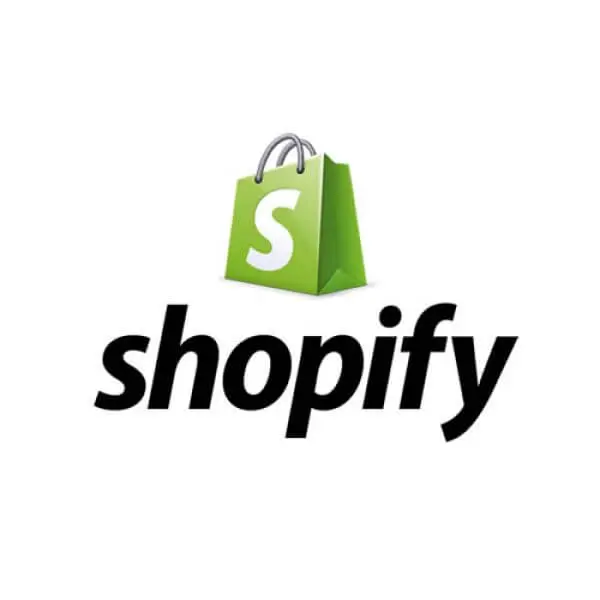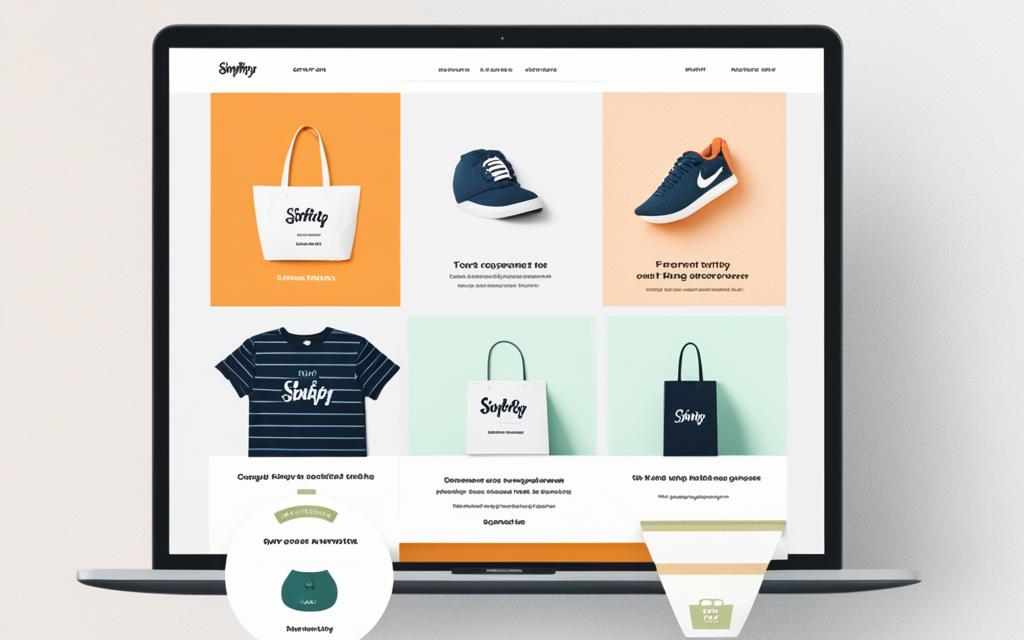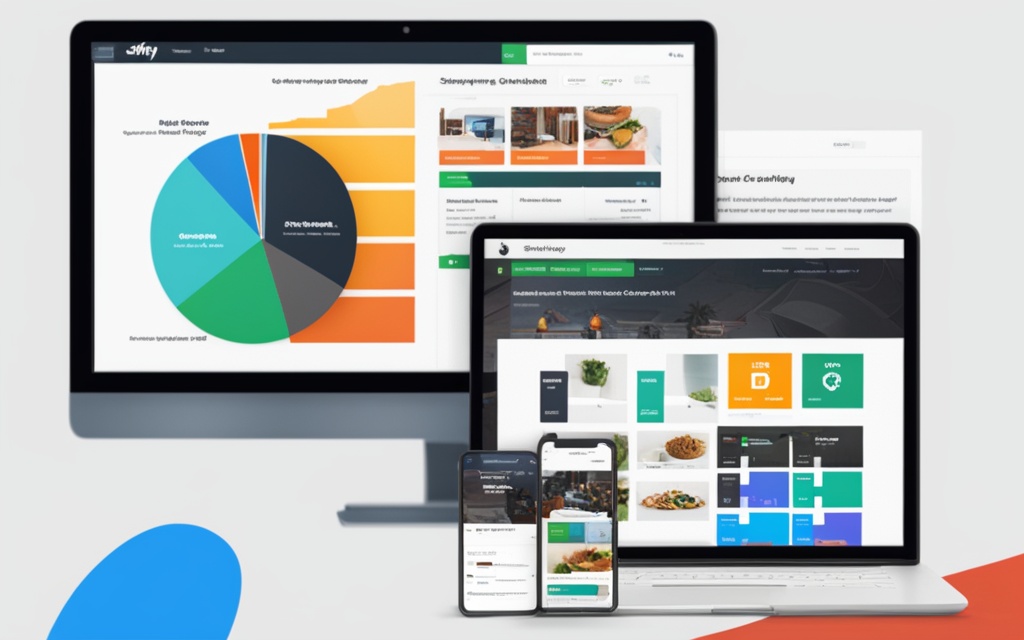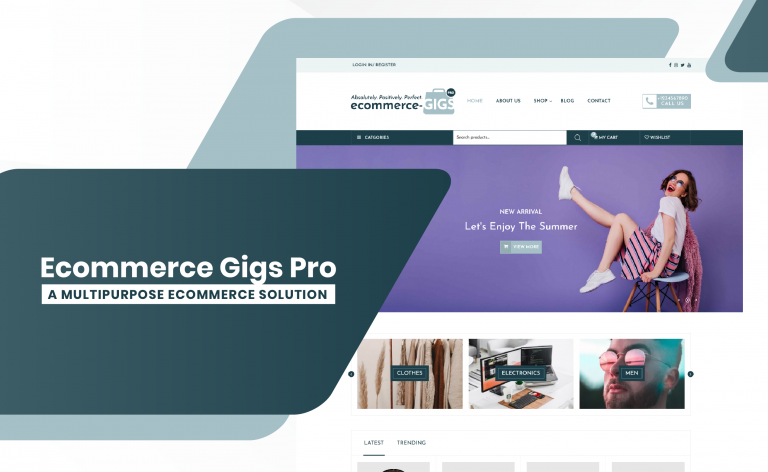Looking to launch your online store? Wondering which ecommerce platform to choose?
You’re in the right place. This article compares the two top platforms – Shopify and Sellfy.
Both the platforms are extremely popular and widely used for creating online stores and starting ecommerce business.
In the subsequent sections, we’ll look at what Shopify and Sellfy offer when it comes to features, benefits, pricing and other things.
This will make it easier for you to pick the right platform for your business.
Let’s begin.
Also Read: Shopify vs Meesho
Try Shopify free followed by first month at just $1. No credit card required. Limited Time Offer.
Getting Started
Getting started with your online store is easy.
Both Sellfy and Shopify have simple ways to join. They let you begin with a free trial, no credit card needed.
Signing up on Sellfy is simple. Just enter your email, pick a password, and choose a store name. After that, you’re ready to start selling. Explore Sellfy’s tools and make your store match your brand.
Shopify also has a simple account setup.
Enter your email, a password, and a store name to begin. They’ll help you set up your theme, products, and design after signing up. This gets your shop ready in no time.
Both Sellfy and Shopify make joining easy and quick. Their designs help new users start without a fuss. You can begin building your store right away.
Like many online tools, Sellfy and Shopify let you try their features. It’s a great chance to see which one fits your store best. No matter if you’re selling digital content or products, both platforms support your ecommerce journey.
Start selling in 10 mins. No Transaction fees. No hidden costs.
Try Sellfy for free!
Products You Can Sell
Both Sellfy and Shopify let you sell various things. You can sell digital items, physical stuff, or offer memberships and subscriptions. They give you a wide choice of what to sell.
Sellfy is great for digital items. It’s perfect for people who make things online. You can sell stuff like ebooks, videos, music, or software with Sellfy.
Shopify, on the other hand, lets you sell both digital and physical goods. So, you could sell clothes, accessories, or gadgets from your Shopify store.
Sellfy has a special feature for selling print-on-demand items. It lets you sell things like custom t-shirts or mugs easily.
On Shopify, you can sell custom items too, by integrating with Printful and Printify. This makes creating and selling unique products simple on Shopify.
Both platforms support selling digital and physical items. Think about what you want to sell to pick the best platform for you.
Storefront Customization
Sellfy and Shopify offer ways to make your online store look special.
With Sellfy, you can change colors, layout, and your logo. This lets you match your store to your brand. You can also put your store or product cards directly on your website. This makes it easier for your customers to shop.
Shopify goes even further with its storefront options. You get to choose from a lot of different themes, some free and some you can buy.
The themes let you change how your store looks to fit what you need. So, whether you like a modern or traditional style, Shopify has something for you.
Shopify also makes it simple to have your site in many languages. This is great if you sell to people from different countries or plan to grow your business internationally.
Also Read: Shopify vs StoreFunnels
| Sellfy | Shopify | |
|---|---|---|
| Customization | Colors, layout, logo customization | Wide range of free and premium themes |
| Embedding | Embed product cards or entire store on your website | N/A |
| Advanced Customization | N/A | Customizable themes for greater control over design elements |
| Multi-Language Support | N/A | Supports multi-language sites out of the box |
Selling Channels
Thinking about selling your products? It’s crucial to know the paths to reach your buyers. Shopify and Sellfy offer different ways to boost your sales.
Shopify has a big advantage with 2.1 million people using it every day. It links well with Facebook and Instagram. You can sell straight from your social media, where most people hang out.
Plus, it connects with big online markets like Amazon, eBay, and Facebook Marketplace. This lets you reach even more customers.
Shopify also has a Point of Sale (POS) system for physical stores. This helps you keep sales, supplies, and customer info up to date. It makes the shopping experience smooth, whether online or in person.
Try Shopify free followed by first month at just $1. No credit card required. Limited Time Offer.
Sellfy focuses on its own selling space. It doesn’t directly link to social media or other big online shops. But, it’s great for selling digital stuff like books, courses, and programs. Anyone selling digital things might find Sellfy perfect.
Your pick between Shopify and Sellfy depends on your business. If you want to sell in lots of places like social media and big online markets? Go for Shopify.
But if you need a spot just for digital products, and nothing much? Sellfy could be the better fit.
| Shopify | Sellfy | |
|---|---|---|
| Selling on Social Media | ✓ | X |
| Integration with Online Marketplaces | ✓ | X |
| Brick and Mortar Store Support | ✓ | X |
| Dedicated Platform for Selling Digital Products | X | ✓ |
Also Read: Shopify vs GoHighLevel
Payment Processing
Shopify has its gateway, Shopify Payments, for quick credit card payments. It supports many countries, including the United States. Shopify also lets you use over 100 other gateways.
Just remember, if you use a different gateway, Shopify may add transaction fees based on your plan.
Sellfy works well with PayPal and Stripe for payments. Unlike Shopify, Sellfy doesn’t add extra fees to your transactions. So, you get to keep more of your money.
Sellfy makes it simple for your customers to pay and is a trusted way for payments to happen smoothly.
Start selling in 10 mins. No Transaction fees. No hidden costs.
Try Sellfy for free!
Shopify and Sellfy differ on transaction fees. Sellfy doesn’t charge any, while Shopify does for external gateways.
If you’re using Shopify, the fees are plan-based. The Basic plan incurs a 2% fee, the Shopify plan has 1%, and the Advanced Shopify plan has 0.5%.
Here’s how Shopify and Sellfy compare with their payment features:
| Feature | Shopify | Sellfy |
|---|---|---|
| Payment Gateways | 100+ gateways | PayPal, Stripe |
| Transaction Fees | 2% (Basic plan), 1% (Shopify plan), 0.5% (Advanced Shopify plan) | No transaction fees |
| Payment Options | Shopify Payments, external payment gateways | PayPal, Stripe |
| Payouts | Immediate payouts | Immediate payouts |
| Fraud Protection | Built-in fraud protection | – |
Shopify puts a lot into keeping your payments secure with fraud protection. On the other hand, Sellfy aims for easy, fast payouts through PayPal and Stripe.
Now you know more about choosing between Shopify and Sellfy for processing payments, think about what you need from a payment system, and you can choose wisely.
Also Read: Shopify vs Systeme
Marketing & SEO Tools
Shopify is packed with various marketing tools and features to boost your online store. You get email marketing, social media scheduling, and loyalty programs to enhance your business.
Additionally, Shopify’s SEO tools let you make your store search engine-friendly. It helps with custom meta tags, SEO URLs, and generates sitemaps for you.
Sellfy focuses less on marketing tools but links well with MailChimp for emails. This means you can use MailChimp’s email power to connect with your customers easily.
Sellfy also has a feature that automatically adds alt text to your product images, making your store more accessible. Nonetheless, it lacks some advanced tools like XML sitemaps for SEO.
If your main focus is on marketing and SEO, Shopify would be the better choice. It has a wide range of tools to help you promote and increase your store’s visibility.
Here’s a quick look at the features:
| Features | Shopify | Sellfy |
|---|---|---|
| Email Marketing | ✅ | Integration with MailChimp |
| Social Media Scheduling | ✅ | N/A |
| Loyalty Programs | ✅ | N/A |
| Custom Metadata Fields | ✅ | ✅ |
| SEO-friendly URLs | ✅ | ✅ |
| Schema Markup | ✅ | N/A |
| Sitemap Generation | ✅ | N/A |
Explore: Sellfy vs Redbubble
Pricing & Fees
We’ll now look at what you pay for plans and fees.
Sellfy has three plans: Starter for $29 a month, Business for $79, and Premium for $159. These prices are applicable on monthly payments.
You can also consider the yearly or two-year payment option which saves you a great deal.
Needless to mention, a higher plan offers more features and benefits.
Shopify has four plans: Basic for $29, Shopify for $79, Advanced Shopify for $299, and Plus for $2300/month.
You get features like detailed reports, saved carts, and cheaper shipping. You must remember, though, there are extra fees for using some payment methods.
Shopify gives the first month at just $1. This is a chance to see if it fits the needs of your business. The trial is helpful for making a wise decision.
Sellfy doesn’t charge transaction fees, which is a plus for your income. On the other hand, Shopify does have fees tied to your plan. These fees can impact your profits, from 2% to 0.5% of each sale.
Each platform has its own pricing. Sellfy is better for those watching costs closely. Shopify offers more but with fees. Pick the one that fits your needs and budget.
Explore: Shopify vs Mijndomein
Apps & Integrations
When picking an ecommerce platform, the apps and integrations are crucial. They boost your store’s features.
Shopify’s app store has over 6,000 apps. These cover many business areas, like marketing, SEO, and inventory. They also include customer support and more. Be it a chatbot, dropship integration, or SEO tools, you’ll find them on Shopify.
Try Shopify free followed by first month at just $1. No credit card required. Limited Time Offer.
Sellfy has over 100 apps in its store. It connects with other platforms through Zapier. This helps you automate tasks easily.
Even though Sellfy’s app selection is smaller, it’s more budget-friendly. You won’t face recurring app costs here.
In brief, Shopify suits those wanting many app choices and deep integrations. For a cheaper solution with Zapier, pick Sellfy.
| Shopify | Sellfy |
|---|---|
| Over 6,000 apps available | Over 100 apps available |
| Integrates with over 100 popular third-party platforms | Integrates with over 50 popular third-party platforms through Zapier |
| Wide range of app options for various business needs | More budget-friendly approach without recurring charges for third-party apps |
Explore: Shopify vs Salla
Customer Support
Shopify has a robust support team. They provide help at all times through live chat, phone, and email. So, you’ll always find someone ready to assist you.
Shopify also has a lot of information online. There is a big library of tips and a forum where users can help each other. This way, you can often find solutions without having to contact someone directly.
Start selling in 10 mins. No Transaction fees. No hidden costs.
Try Sellfy for free!
Sellfy mainly offers help by email. They also have a helpcenter where you can find tutorials and guides to solve your issues.
While Sellfy doesn’t have as many support channels as Shopify, they still work hard to answer you quickly.
Irrespective of what you choose, both are known for their top-notch customer support. They are eager to assist with any concerns or questions you might have.
Also Read: Shopify vs Medusa.js
Conclusion
Deciding on Shopify or Sellfy is about what your business needs.
Shopify is for those who need a lot of customization, scalability, and marketing support.
Yet, if you want something straightforward, easy to set up, and aim to sell digital products, Sellfy could be your pick.
We suggest trying out both platforms for free. This way, you can see which one fits your needs better. Choosing the one that supports your goals is key to your online shop’s success.

















